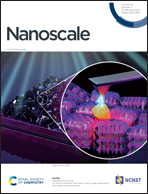Green approaches for the synthesis of metal and metal oxide nanoparticles using microbial and plant extracts
Abstract
Green synthesis approaches are gaining significance as promising routes for the sustainable preparation of nanoparticles, offering reduced toxicity towards living organisms and the environment. Nanomaterials produced by green synthesis approaches can offer additional benefits, including reduced energy inputs and lower production costs than traditional synthesis, which bodes well for commercial-scale production. The biomolecules and phytochemicals extracted from microbes and plants, respectively, are active compounds that function as reducing and stabilizing agents for the green synthesis of nanoparticles. Microorganisms, such as bacteria, yeasts, fungi, and algae, have been used in nanomaterials’ biological synthesis for some time. Furthermore, the use of plants or plant extracts for metal and metal-based hybrid nanoparticle synthesis represents a novel green synthesis approach that has attracted significant research interest. This review discusses various biosynthesis approaches via microbes and plants for the green preparation of metal and metal oxide nanoparticles and provides insights into the molecular aspects of the synthesis mechanisms and biomedical applications. The use of agriculture waste as a potential bioresource for nanoparticle synthesis and biomedical applications of biosynthesized nanoparticles is also discussed.

- This article is part of the themed collections: Nanoscale and Nanoscale Horizons: Nanoparticle Synthesis, Nanoscale Most Popular 2022 Articles and Recent Review Articles


 Please wait while we load your content...
Please wait while we load your content...